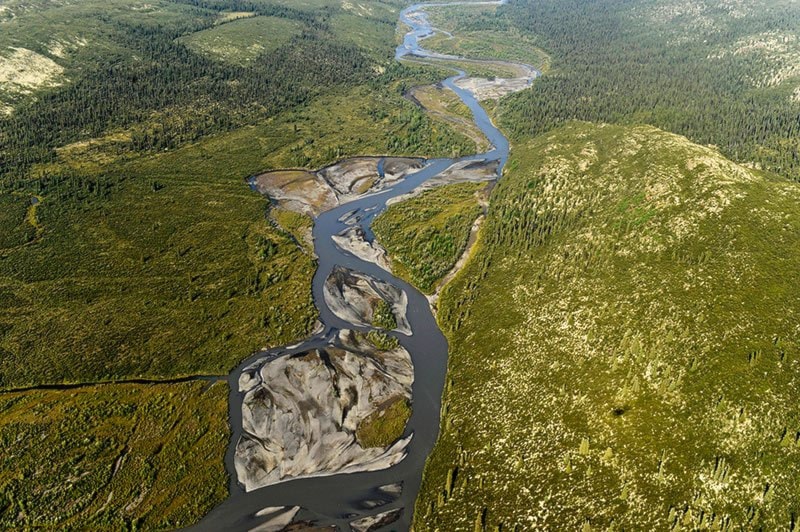The Peel draft land-use plan could be a landmark in Yukon history.
Though it can still be altered, the Peel Watershed Planning Commission’s draft document challenges a Yukon economic institution—free-staking.
The Peel plan is a 70,000-square-kilometre experiment in democratic land-use planning. And, after five years of research and consultation, the commission decided the old frontier model needs a makeover.
“The whole basis of free-staking is that mining is the best use of the land,” said Lewis Rifkind, an energy co-ordinator for the Yukon Conservative Society. “This whole concept of free-entry runs right against land-use planning.”
The draft plan puts 63.6 per cent of the Peel under some form of protection from industrial development, on the basis that these sections are valued more for their pristine nature rather than their ore deposits.
“Our resource-tenure system is one of open staking, and miners also assert they have a right to build roads to claims and leases,” said a letter written by commission members.
The assumption is “industrial development of resources and ‘opening the country’ is best for society,” it says, adding “underlying this assumption is another, that economic worth is how lands and resources should be valued by society.”
The contentious free-staking concept is a problem because “by its very nature, exercising this right undermines what is valued by others: the wildness, the biological richness, the roadlessness of the country and its heritage,” said the commission letter.
That’s why most of the Peel will continue to look and feel like it always has—a vast expanse of wilderness.
A chunk of land, 36.8 per cent, is designated as integrated management zones, where mineral and oil and gas licences will be respected.
There are also three entry points marked out in the draft land-use plan: a road near the Dempster Highway’s crossing into the Northwest Territories, another on the extreme eastern edge of the Peel heading to the Crest iron ore deposit and the Wind River Trail that runs north from Mayo.
The mining community wanted more.
“This is not what we were hoping to see,” said Chamber of Mines president Carl Schulze.
“If you were looking for a place to invest your money, would you invest your money in an area where there are severe restrictions to potentially getting mineralization out?” he said.
While the mining claims in the general protection zones will be grandfathered—an area that accounts for 48.9 per cent of the Peel—the claims are useless because it’s difficult to get access roads to the sites.
“The value of these claims is essentially zero,” said Schulze.
“No new claims are allowed and so, as these claims gradually dissipate, they’ll eventually lapse and the ore will become a protected area,” he said.
Schulze also takes issue with the Remote Access Lakes zones, which protect 0.3 per cent of the Peel.
“To cover lakes that might be useful for fixed-wing aircraft, it precludes access in that form as well,” he said.
But the miners aren’t just nitpicking over the details, which are far from binding at this point.
They sense the beginning of a grassroots movement to end free staking.
“That’s exactly the kind of language I hate to hear,” said Schulze of the free-staking references. “Those are the kind of comments that, if they catch on in Canada as a whole, will sink this country economically.”
Ending free staking will destroy the idea of personal property in the name of “values,” said Schulze.
“And what exactly are these values?” said Schulze. “We have to govern our country by this rule of law, we can’t govern by values because it could be anybody’s values, or any one group of persons’ values or any one single ethnic group or single interest group or something.”
But the public overwhelmingly supports a plan similar to the draft land-use plan, and the whole notion of land-use planning is to decide which regions should have free staking and which should not.
Basically, it’s a battle over what method of land use comes first: a free-for-all that favours mineral extraction, or a lengthy planning phase that precedes free staking and decides where it can happen.
“Attitudes are starting to change,” said Rifkind. “We know now, through land-use planning, that there are other better uses for land.”
“Sometimes it’s just leaving the land alone.”
Contact James Munson at
jamesm@yukon-news.com.
